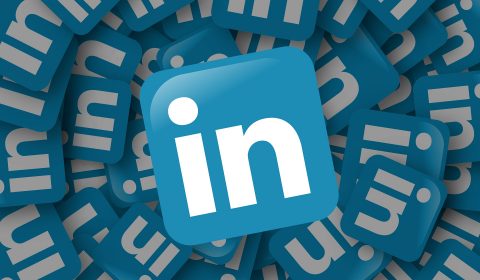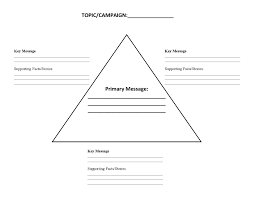A Future of Sharing
How would you feel if I told you that sharing something as personal as your health and sicknesses on social media could someday help track the spread of disease? You might say that’s a little crazy, but would you do it if it meant keeping others healthy? Would you want others to do it if it meant keeping you healthy? Patrick Tucker thinks that soon the CDC will use our ever-posting social media habit to determine where illnesses are and where they’ll spread next, making Minority Report a thing of the present.
Although we’re not yet there, some health non-profit organizations have utilized this same idea of sharing personalized stories during campaigns, so people can talk about personal experiences and connect with others to spread information about certain diseases.
March of Dimes: Share Your Story
The campaign, ShareYourStory, by March of Dimes brings to life a safe online community in which the “neighbors” are families who all share in one particular struggle: a sick newborn. Members of this virtual “neighborhood” are able to share the struggle they are having, offer and receive support, and spread information.
“ShareYourStory is home to all of us who have not had that picture-perfect pregnancy, who struggle with little ones in the Neonatal Intensive Care Unit, or forever hold their child in their heart. It is where I found hope for the future,” said community member Lauren Wilson, from Hawaii.
The shareyourstory campaign easily connects to social media platforms so that they can be circulated to an even wider array of people. By using avatars and enabling videos and stories, the campaign to improve the health of babies becomes human, personalized, local, and gives the families a way to see the faces of the people that they connect with on a daily basis. The dedicated website, shareyourstory.org, brings families to a blog forum where they can post and react to others’ posts. Yesterday, for example, twenty members posted and commented on each others’ stories, questions, and messages.
The Power of Storytelling
Stories are so powerful because they withstand the tests of time. They spread from person to person, community to community, through families and friends; they change, but what is at the heart of a good story remains the same. By using storytelling as the main mode of communication in a campaign, organizations are able to tap in to human emotions and create common bonds.
Each campaign uses the very powerful tool of empathy. This is something that needs to be employed more in our health systems in order for patients and physicians to have a strong trusting relationship. Now, don’t confuse sympathy with empathy. Where sympathy leads to disconnect, empathy drives connection by staying out of judgement and communicating to a person that he or she is not alone. The problem with sympathy is that it always tries to show people the “good” in something bad. Health care providers need to be able to deter sympathy and understand this difference.
“You never really understand a person until you consider things from his point of view…Until you climb inside of his skin and walk around in it” ” -Harper Lee, To Kill A Mockingbird.
If physicians can step in to their patients’ shoes, then they can start treating patients as individuals instead of just another number. Interacting with patients not only helps create bonds, but allows physicians and healthcare providers to learn about individuals on a personal level. When a patient sees that their physician cares for them as a fellow human, it allows space for open dialogue between patients and physicians which leads to better, personalized care.
American Diabetes Association’s campaign, This is Diabetes, uses the hashtag #thisisdiabetes, to encourage individuals or friends and family to post their own video of a personal story and struggle they deal with from the disease. What this campaign encourages is spreading awareness about parts of the disease that many people would not be aware of otherwise and what kinds of crippling effects diabetes has on other aspects of a person’s health and the other lives that disease touches.
The National Multiple Sclerosis (MS) Society‘s, Together We Are Stronger Campaign uses similar tactics to inspire individuals living with MS to share their story through video and offer insights. It connects people together with different ways of dealing with the disease, educating people on the disease, and coming up with new ideas for a cure.
‘Empathetic Storytelling’
I call these campaigns ‘empathetic storytelling,’ since they connect humans on a common health issue and provide support. They reverse the negative connotation that comes with the idea of spreading disease. Instead they spread information about a disease through words and symbols. By spreading words, instead of sicknesses, the information that is shared and reshared can help the listeners prevent their own risk of developing a disease, or even find a treatment.
Recommendations for Empathetic Storytelling For Health & Nonprofit Campaigns:
- Utilize multiple channels and social media networks
- Appeal to emotion, but don’t go too far (Think about the dog shelter commercials, how many times do you change the channel as soon as you see a sad dog come on your screen?)
- Stories don’t always have to be sad, share some hope for the future
- Mix words, pictures, and videos
- Share your own story, this connects you to your audience
- Create a powerful hashtag
- Provide useful information (an audience needs to know about the cause in order to participate in the campaign)
- Be cohesive and consistent, all the channels or networks you utilize should include the same information, hashtags, and look (branding, colors, etc.)
- Try to stay away from medical jargon, in a health campaign it may be easy to use scientific words, stop and think about your intended audience (what is their knowledge, or lack thereof, on the topic)











